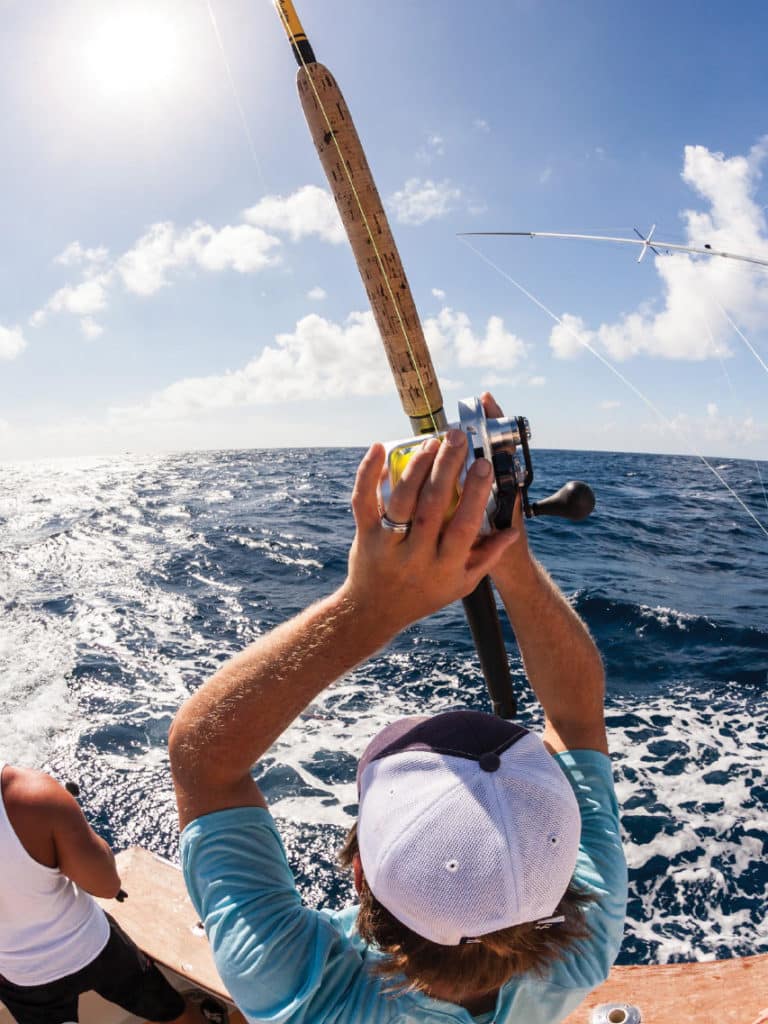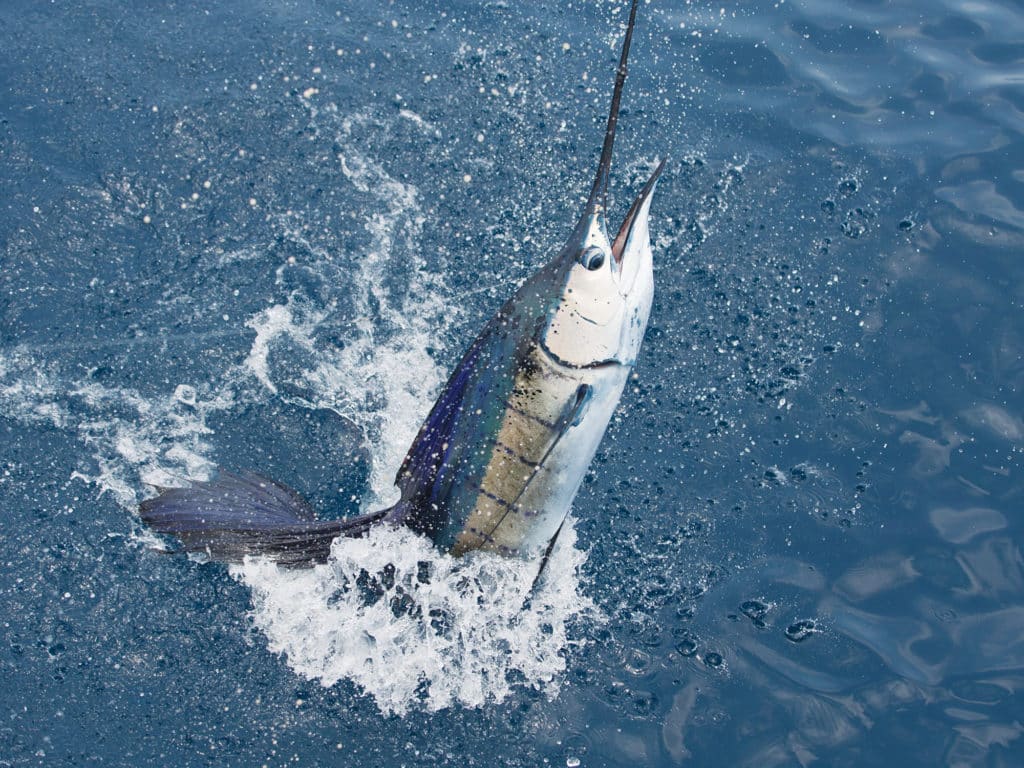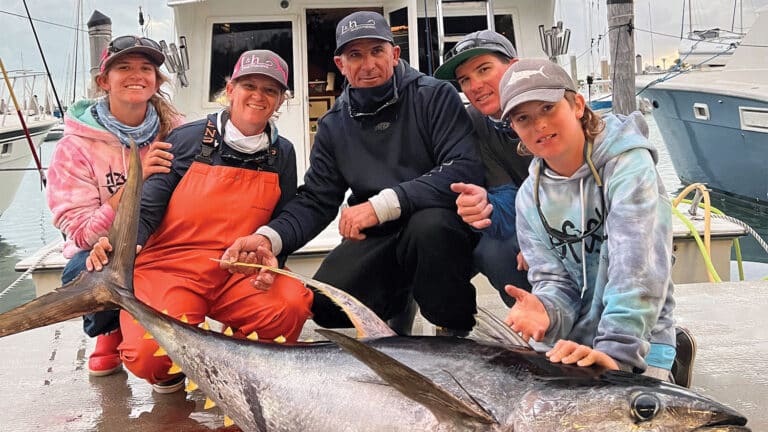
Trolling chin-weighted ballyhoo on circle hooks with 20- to 30-pound-test tackle is one of the most popular techniques for anglers targeting billfish around the world. But what happens when you get a bite, drop-back flawlessly, ease the drag up and then … nothing, nobody’s home. What do you do next?
We turned to Capt. John LaGrone, one of the most experienced dead-bait captains on the water, for his recommendations on how to get that second or even third bite.
“On a missed first bite, there are a lot of variables involved to get another shot at hooking that fish,” he says. “Pacific sailfish are different than blue marlin, which are different from striped marlin. The ability to read the aggressiveness of each species is a skill an angler can develop with experience. Our Central American sailfish are the most common species and are also the easiest billfish to hook on a second or third attempt.”
The first step when setting up the spread for dead-bait fishing is to create a rigger mark on each of the lines: Use a Sharpie to mark a short section of the line before putting it in the release clip once the outrigger baits are set at the correct distance in the spread. This removes any guesswork of how far back baits should be and is also a key element after a missed bite. After an angler misses the bite, LaGrone advises them to wind the bait back to the rigger mark in a controlled but swift motion. “Don’t wind so fast that the bait jumps out of the water,” LaGrone cautions. “It’s a big turnoff for the fish and a no-no as an angler. The first reason to wind the bait up is to see if you were left with just the ballyhoo head: a sancocho. Second, the action of winding up the bait can excite the fish into a second bite. The third reason is to draw the fish back into the spread so that it doesn’t stay back a mile behind the boat.” If you aren’t using rigger marks, the angler will want to reel the bait in close enough so that both you and the captain can determine if there is still a usable bait.

LaGrone also says that if the angler still has an intact bait, he should quickly put the reel back into free-spool with a light thumb or forefinger on the spool and get the rod tip up so the bait is near the surface. “Watch your bait and be prepared for a second crack at a fish,” he says. “At the first sign of a sailfish — a bill, a fin or just a shadow behind the bait — the angler should be in free-spool and dropping back to the fish.” This is different than dropping back to a missed blue marlin, where LaGrone prefers the angler actually feel the bite first before free-spooling the reel.
If a sancocho has occurred, all is not necessarily lost. LaGrone says to wind hard and bring the head of the bait back to the boat. “This can excite a bite and will often bring a sailfish back into the spread for your partner to back you up and pick up the fish,” he says. “A mate will have another rod with a fresh bait ready to hand to you as soon as you clear the first one, so you can get a bait back in the water for another shot at a fish.” If the angler remains calm and follows these steps, a second or even third bite can lead to a successful billfish release.

About the Expert: Capt. John LaGrone has fished extensively throughout Central America for nearly three decades and was a standout skipper for many years in Guatemala before relocating to Cost Rica’s fish-rich Pacific coast. He’s currently at the helm of Marc Stanley’s 60-foot Spencer, Pelese, in Los Sueños.







